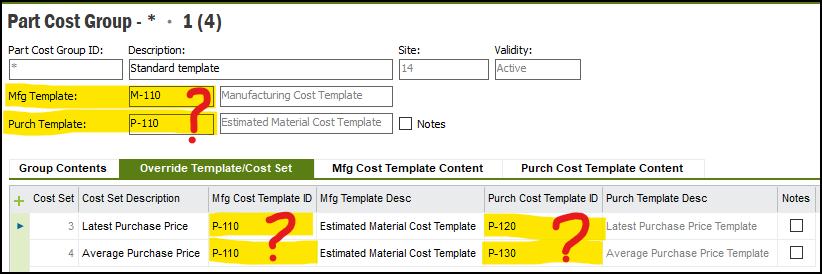Can anyone clarify how does the Part Cost Group and the Override Template/Cost Set works and should be defined?
We have defined 4 Part Cost Groups: each contains manufactured and purchased parts. Is it ok?
If we want to use the M-110 Cost template for manufactured parts and P-130 (averaged) for purchased parts. Should we put that in the header part of the Part Cost Group or in the Override?

Should we have anything defined in the Override Template/Cost Set? When should this be used? Does it apply to all parts contained in that particular Part Cost Group? Why would you use the Override instead of changing the parameters in the header of the Part Cost Group?
We are using IFSAPP10.
